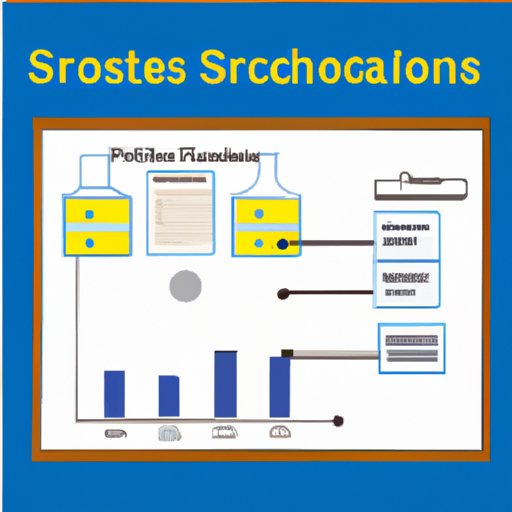Introduction
A science fair is a great way to explore different scientific topics and get creative with your research. It’s also a great opportunity to present your findings in a visual and organized way. One of the most important parts of presenting your project at the science fair is creating a science fair board. In this article, we’ll cover what to put on a science fair board, from outlining the scientific process to highlighting your results and discussing your conclusions.
Overview of the Scientific Process
The scientific process involves a series of steps used to investigate and answer questions about the natural world. As explained by the American Association for the Advancement of Science (AAAS), “The scientific process is the way scientists go about asking and answering scientific questions by making observations and doing experiments.”
The steps of the scientific process typically involve research, forming a hypothesis, designing an experiment, collecting data, analyzing the data, drawing conclusions, and communicating the results. These steps are essential when completing a successful science project.
Outline the Scientific Process
When creating a science fair board, it’s important to outline the steps of the scientific process. Begin by providing an overview of the scientific process and then explain each step in detail.
Step 1: Research and Develop Hypothesis
The first step of the scientific process is to conduct research on the topic you’re exploring. You should familiarize yourself with the existing knowledge and form a hypothesis based on what you’ve learned. Your hypothesis is an educated guess or prediction about the outcome of your experiment.
Step 2: Design Experiment
Once you’ve formed your hypothesis, you can design an experiment to test it. This involves planning out the variables, materials, and procedures that will be used in the experiment. Make sure to keep detailed notes so you can refer back to them during the experiment.
Step 3: Collect Data
The next step is to collect data from your experiment. This involves taking measurements and recording your observations. Make sure all the data is accurate and consistent.
Step 4: Analyze Data
Once you’ve collected the data, you can analyze it to determine if your hypothesis was correct. This involves looking for patterns and trends in the data and interpreting the results.
Step 5: Draw Conclusions
Finally, you can draw conclusions based on your analysis of the data. This allows you to determine whether your hypothesis was correct or not. It’s also important to consider how your results could be applied in the real world.
Describe Your Project
Now that you’ve outlined the scientific process, you can start to describe your project. Begin by explaining the purpose of your project and then provide a brief overview of your hypothesis. Make sure to include any relevant background information that might be helpful for understanding the project.
Include Visuals
Visuals are an important part of creating a science fair board. They help to illustrate the points you’re making and make the project more engaging. Include photos, diagrams, and graphs that relate to your project. You can also use posters, models, and other three-dimensional objects if applicable.
Highlight Results
After you’ve described your project and included visuals, you can highlight your results. Provide a summary of the data you collected, as well as a graphical representation of the results. This will help to illustrate your findings in a clear and concise way.
Discuss Conclusions
The final step is to discuss your conclusions. Summarize the findings of your experiment and explain the implications of your results. Make sure to explain how your results could be applied in the real world and provide recommendations for further research.
Conclusion
Creating a science fair board is an important part of presenting your project at the science fair. The board should outline the steps of the scientific process, describe your project, include visuals, highlight your results, and discuss your conclusions. By following these steps, you’ll be able to create an effective and engaging science fair board.
(Note: Is this article not meeting your expectations? Do you have knowledge or insights to share? Unlock new opportunities and expand your reach by joining our authors team. Click Registration to join us and share your expertise with our readers.)
